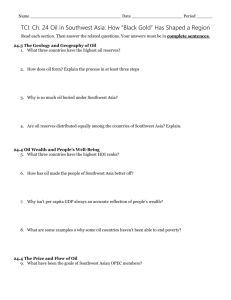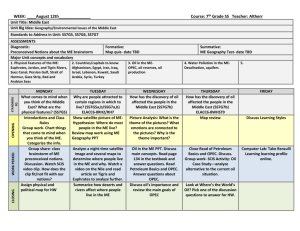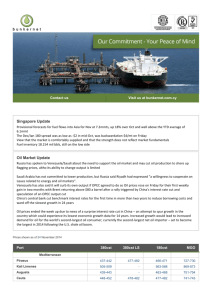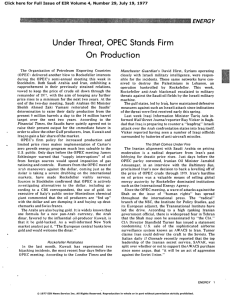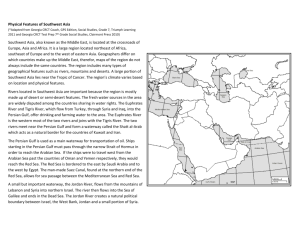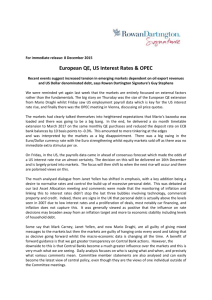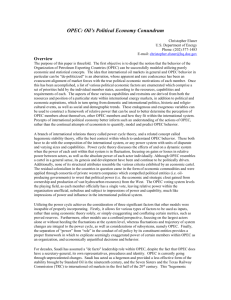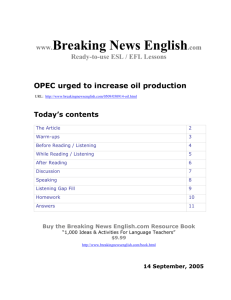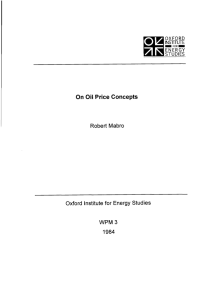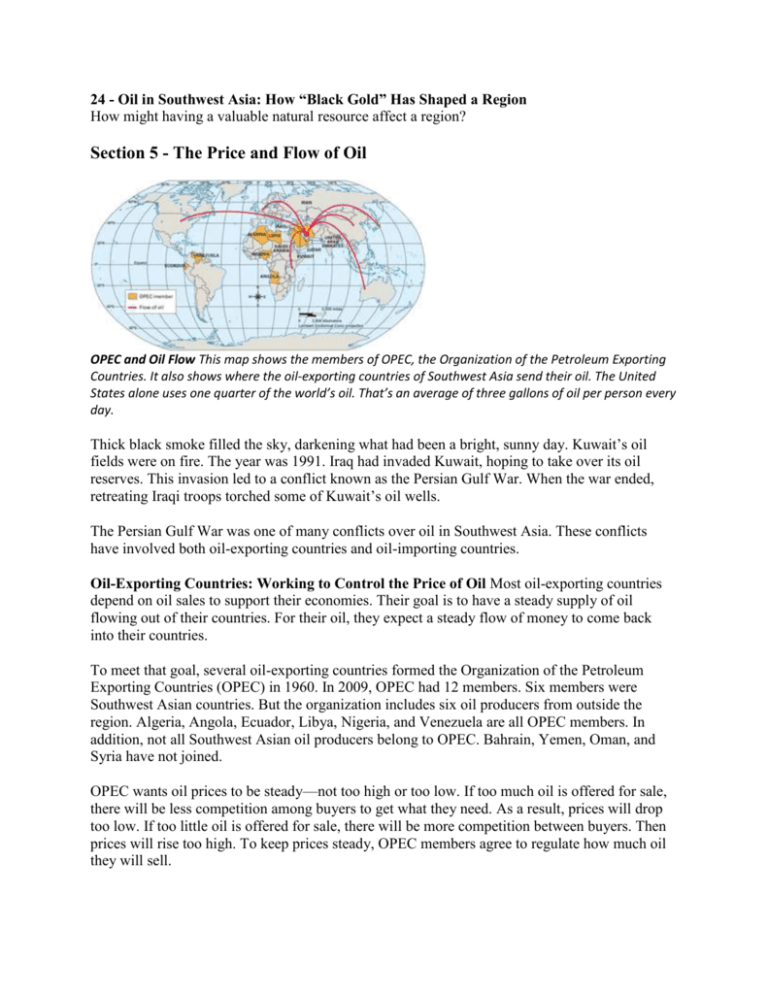
24 - Oil in Southwest Asia: How “Black Gold” Has Shaped a Region
How might having a valuable natural resource affect a region?
Section 5 - The Price and Flow of Oil
OPEC and Oil Flow This map shows the members of OPEC, the Organization of the Petroleum Exporting
Countries. It also shows where the oil-exporting countries of Southwest Asia send their oil. The United
States alone uses one quarter of the world’s oil. That’s an average of three gallons of oil per person every
day.
Thick black smoke filled the sky, darkening what had been a bright, sunny day. Kuwait’s oil
fields were on fire. The year was 1991. Iraq had invaded Kuwait, hoping to take over its oil
reserves. This invasion led to a conflict known as the Persian Gulf War. When the war ended,
retreating Iraqi troops torched some of Kuwait’s oil wells.
The Persian Gulf War was one of many conflicts over oil in Southwest Asia. These conflicts
have involved both oil-exporting countries and oil-importing countries.
Oil-Exporting Countries: Working to Control the Price of Oil Most oil-exporting countries
depend on oil sales to support their economies. Their goal is to have a steady supply of oil
flowing out of their countries. For their oil, they expect a steady flow of money to come back
into their countries.
To meet that goal, several oil-exporting countries formed the Organization of the Petroleum
Exporting Countries (OPEC) in 1960. In 2009, OPEC had 12 members. Six members were
Southwest Asian countries. But the organization includes six oil producers from outside the
region. Algeria, Angola, Ecuador, Libya, Nigeria, and Venezuela are all OPEC members. In
addition, not all Southwest Asian oil producers belong to OPEC. Bahrain, Yemen, Oman, and
Syria have not joined.
OPEC wants oil prices to be steady—not too high or too low. If too much oil is offered for sale,
there will be less competition among buyers to get what they need. As a result, prices will drop
too low. If too little oil is offered for sale, there will be more competition between buyers. Then
prices will rise too high. To keep prices steady, OPEC members agree to regulate how much oil
they will sell.
However, two realities limit OPEC’s ability to control oil prices. First, OPEC cannot control all
of the world’s oil sales. Its members export less than half of the world’s crude oil. The rest
comes from non-OPEC countries such as Russia and Mexico. Second, even OPEC members
don’t always act as a group. Sometimes some members refuse to follow OPEC decisions on how
much oil to sell.
Sharing the Cost of War Many countries shared the costs of the 1991 Persian Gulf War. About two thirds
of the money came from oil-exporting countries. They wanted to protect their oil reserves. The rest came
from oil-importing countries. They wanted to protect the flow of oil into their countries.
Oil-Importing Countries: Working to Protect the Flow of Oil Other countries depend on the
flow of oil from Southwest Asia to fuel their economies. The United States, Japan, and many
countries in Europe are big oil importers. They have a strong interest in protecting the flow of oil
around the world.
As you have read, in 1990 Saddam Hussein, the dictator of Iraq, ordered his military to invade
Kuwait. This gave him control of Kuwait’s oil fields. Fears grew that he would target Saudi
Arabia next. If Iraq took over that country, Saddam would control much of the world’s oil supply.
If he decided to cut off oil sales, many oil-importing countries would suffer severe energy
shortages.
The United States and many other countries formed a coalition, or alliance, to drive Iraq out of
Kuwait. Some members of the coalition were oil-importing countries. They did not want their oil
supplies threatened by Iraq. Others were oil-exporting countries. They feared losing control of
their oil reserves to Iraq.
The coalition went to war in 1991 to drive Iraqi forces out of Kuwait. The Persian Gulf War
lasted just a few weeks. In that time, Kuwait was freed from Iraqi control. The coalition victory
sent the world a clear message. As long as oil is the world’s main source of energy, countries that
import oil will work to keep it flowing.
© 2012 Teachers' Curriculum Institute. All rights reserved.


